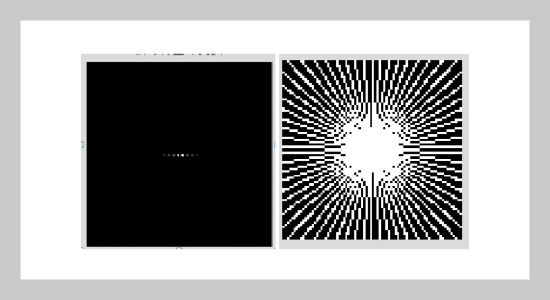REFERENCES
- [1] Li, F. J., Luo, B. and Liu, P., “Secure Information Aggregation for Smart Grids Using Homomorphic Encryption,” Smart Grid Communications (SmartGridComm), 2010 First IEEE International Conference, pp. 327�332 (2010). doi: 10.1109/SMARTGRID. 2010.5622064
- [2] Chen, S. Y., Song, S. F., Li, L. X. and Shen, J., “Survey on Smart Grid Technology,” Power System Technology, Vol. 33, No. 10, pp. 1�7 (2009).
- [3] Farhangi, H., “The Path of the Smart Grid,” IEEE Power Energy Mag., Vol. 8, No. 1, pp. 18�28 (2010). doi: 10.1109/MPE.2009.934876
- [4] Bollen, M. H. J., “Understanding Power Quality Problems,” New York: IEEE Press Series on Power Engineering, Vol. 1, No. 5, pp. 25�26 (2000). doi: 10.1109/9780470546840.ch1
- [5] Colet-Subirachs, A., Ruiz-Alvarez, A., Gomis-Bellmunt, O., Alvarez-Cuevas-Figuerola, F. and Sudria-Andreu, A., “Centralized and Distributed Active and Reactive Power Control of a Utility Connected Microgrid Using IEC61850,” IEEE Systems Journal, Vol. 6, No. 1, pp. 58�67 (2012). doi: 10.1109/JSYST.2011.2162924
- [6] Florkowski, M., “Exploitation Stresses and Challenges in Diagnostics of Electrical Industrial Equipment,” Industrial Electronics (ISIE), IEEE International Symposium, Vol. 10, No. 6, pp. 15�25 (2011). doi: 10. 1109/ISIE.2011.5984129
- [7] Ribeiro, M. V., Romano, J. M. T. and Duque, C. A., “An Improved Method for Signal Processing and Compression in Power Quality Evaluation,” Power Delivery, IEEE Transactions On, Vol. 19, No. 2, pp. 464�471 (2004). doi: 10.1109/TPWRD.2003.822497
- [8] Panda, G., Dash, P. K., Pradhan, A. K. and Meher, S. K., “Data Compression of Power Quality Events Using the Slantlet Transform,” IEEE Trans. Power Delivery, Vol. 17, No. 3, pp. 662�667 (2002). doi: 10. 1109/61.997957
- [9] Anis Ibrahim, W. R. and Morcos, M. M., “Artificial Intelligence and Advanced Mathematical Tools for Power Quality Applications: A Survey,” Power Delivery, IEEE Transactions On, Vol. 17, No. 2, pp. 668�673 (2002). doi: 10.1109/61.997958
- [10] Dash, P. K., Panigrahi, B. K., Sahoo, D. K. and Panda, G., “Power Quality Disturbance Data Compression, Detection, and Classification Using Integrated Spline Wavelet and S-Transform,” Power Delivery, IEEE Transactions On, Vol. 18, No. 2, pp. 595�600 (2003). doi: 10.1109/TPWRD.2002.803824
- [11] Li, P., Fei, L. Q., Qian, J., Chen, J. and Li, X. C., “Based on the Improved HHT and Its Application in the Power Quality Detection of Microgrid,” Electrical Machines and Systems, Vol. 19, No. 5, pp. 1�23 (2011). doi: 10.1109/ICEMS.2011.6073708
- [12] Chen, P., Xu, B. Y., Ge, Y. Z. and Liu, H. L., “Discrete Wavelet Transfrom and Its Application to Compression of Signal of Fault Induced Transient Travelling Waves on Transmission Lines,” Automation of Electic Power Systems, Vol. 4, No. 3, pp. 31�35 (2009).
- [13] Ju, G. F. and Luo, A., “DWT Application to Real-Time Compression of Power Quality Disturbance Data,” Automation of Electic Power Systems, Vol. 19, No. 8, pp. 61�63 (2002).
- [14] Guo, B. B. and Huang, C., “Power Quality Disturbance Data Compression Based on Wavelet Packet Transform,” Electic Power Automation Equipment, Vol. 25, No. 11, pp. 34�37 (2005).
- [15] Gao, P. S., Chen, X. J., Wu, W. L. and Song, B. M., “Compression of 2-D Representation of Power Quality Event Data,” Journal of Zhejiang University, Vol. 42, No. 4, pp. 686�690 (2008).
- [16] Cand�es, M. J., Romberg, J. K. and Tao, T., “Robust Uncertainty Principles: Exact Signal Reconstruction from Highly Incomplete Frequency Information,” IEEE Transactions on Information Theory, Vol. 52, No. 9, pp. 489�509 (2006). doi: 10.1109/TIT.2005.862083
- [17] Donoho, D. L., “Compressed Sensing,” IEEE Transactions on Information Theory, Vol. 52, No. 18, pp. 1289�1306 (2006). doi: 10.1109/TIT.2006.871582
- [18] Baraniuk, R., et al. “A Simple Proof of the Restricted Isometry Property for Random Matrices,” Constructive Approximation, Vol. 28, No. 3, pp. 123�152 (2008). doi: 10.1007/s00365-007-9003-x
- [19] Candes, E. J. “The Restricted Isometry Property and Its Implications for Compressed Sensing,” Applied & Computational Mathematics, Vol. 346, pp. 9�10 (2008). doi: 10.1016/j.crma.2008.03.014
- [20] Chen, S., Donoho, D. L. and Sauders, M. A., “Atomic Decomposition by Basis Pursuit,” SIAM Review, Vol. 43, No. 1, pp. 129�159 (2001). doi: 10.1137/S0036 14450037906X
- [21] Lustig, M., Donoho, D. and Pauly, J. M., “Sparse MRI: The Application of Compressed Sensing for Rapid MR Imaging,” Magnetic Resonance in Medicine, Vol. 58, No. 6, pp. 1182�1195 (2007). doi: 10.1002/mrm. 21391
- [22] Dai, Q. and Sha, W., The Physics of Compressive Sensing and the Gradient-Based Recovery Algorithms, The University of Hong Kong, http://arxiv.org/abs/0906. 1487 Research report (2009).
- [23] Dugan, R. C., Megranghan, M. F. and Benty, H. W., Electrical Power Systems Quality, New York: MCGraw-Hill (1996)
- [24] Becker, S., Bobin, J. and Candès, E. J., “NESTA: A Fast and Accurate First-Order Method for Sparse Recovery,” SIAM Journal on Imaging Sciences, Vol. 4, No. 1, pp. 1�39 (2011). doi: 10.1137/090756855
- [25] Schmidt, M., Fung, G. and Rosales, R., “Fast Optimization Methods for L1 Regularization: A Comparative Study and Two New Approaches,” Machine Learning Springer Berlin Heidelberg, pp. 286�297 (2007). doi: 10.1007/978-3-540-74958-5_28
- [26] Tropp, J. A. and Gilbert, A. C., “Signal Recovery from Partial Information via Orthogonal Matching Pursuit,” IEEE Transactions on Information Theory, Vol. 53, No. 5, pp. 4655�4666 (2007). doi: 10.1109/TIT.2007. 909108
- [27] Wang, X., Wang, L., Miao, G., et al., “An Approach for Compressive Sampling and Reconstruction of Transient and Short-Time Power Quality Disturbance Signals,” Power System Technology, pp. 42�51 (2012).
















